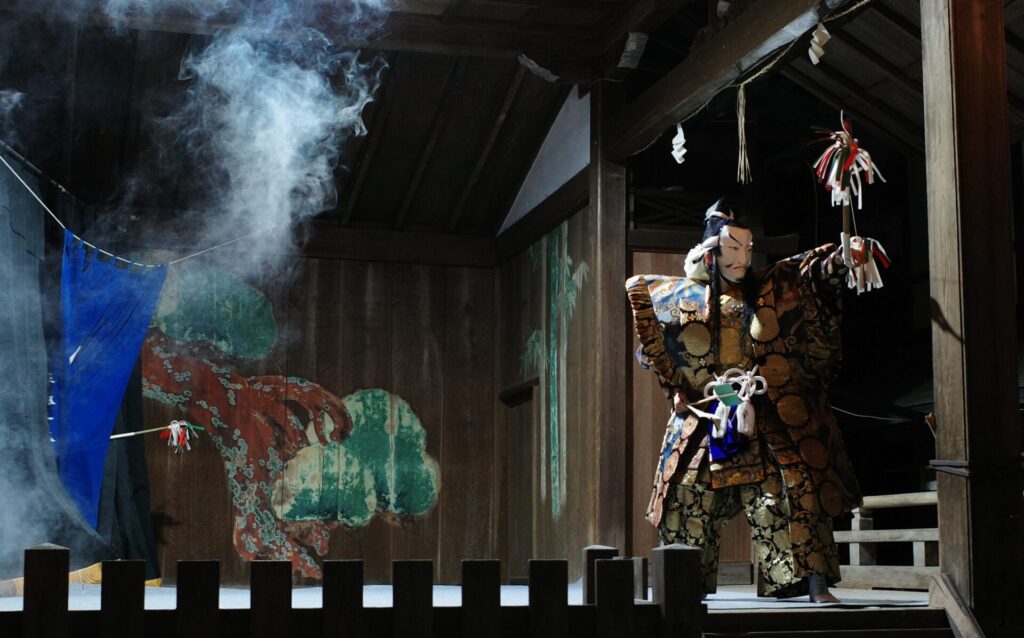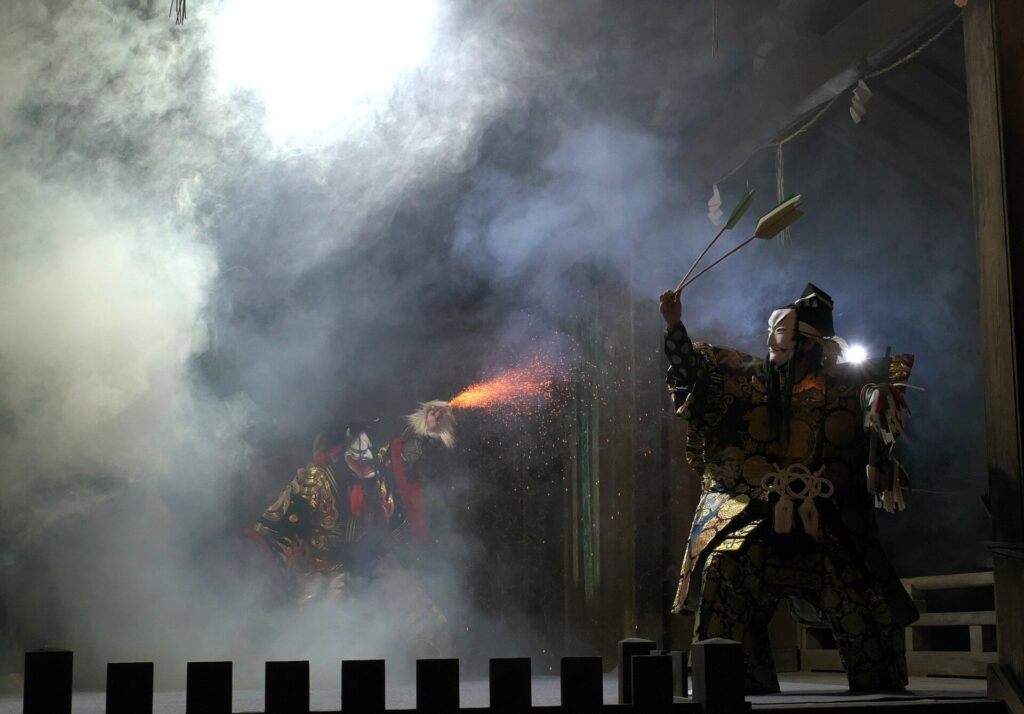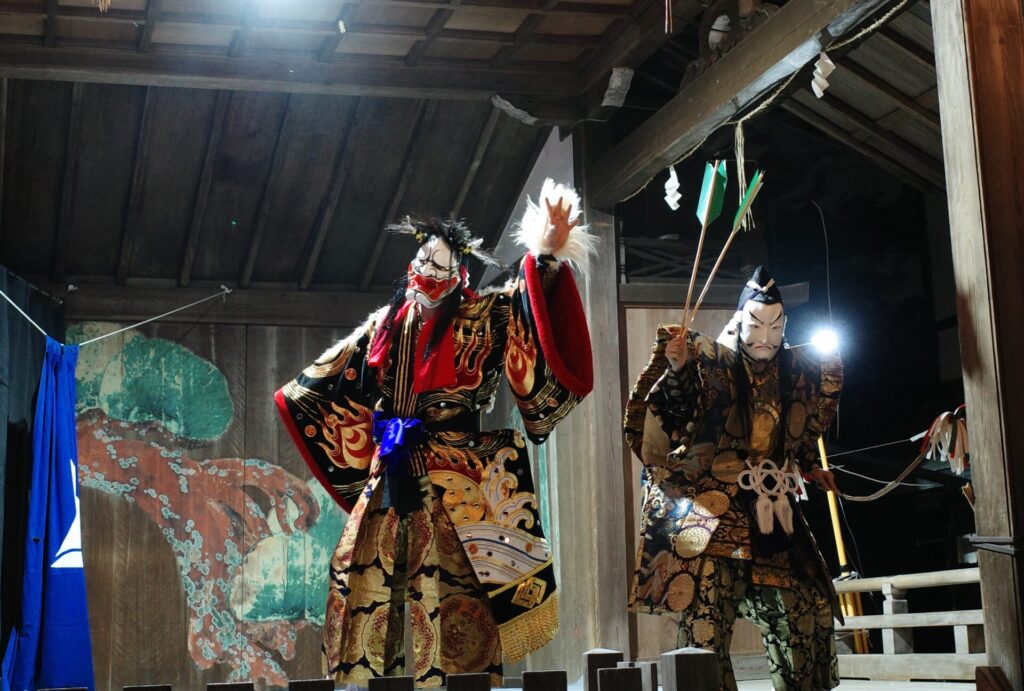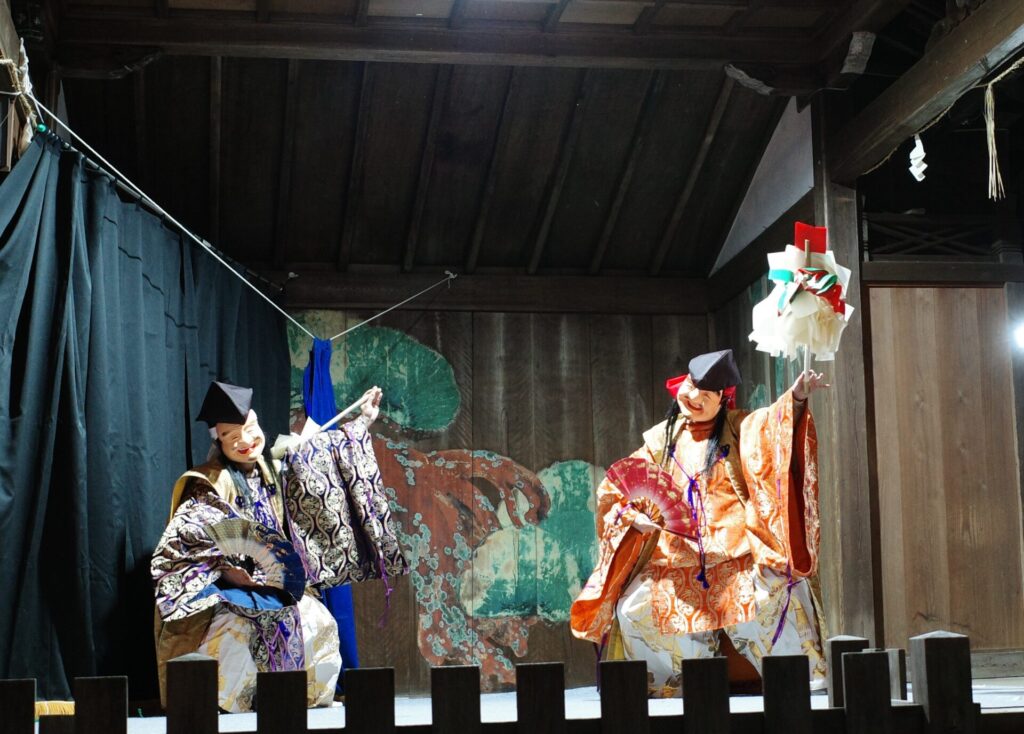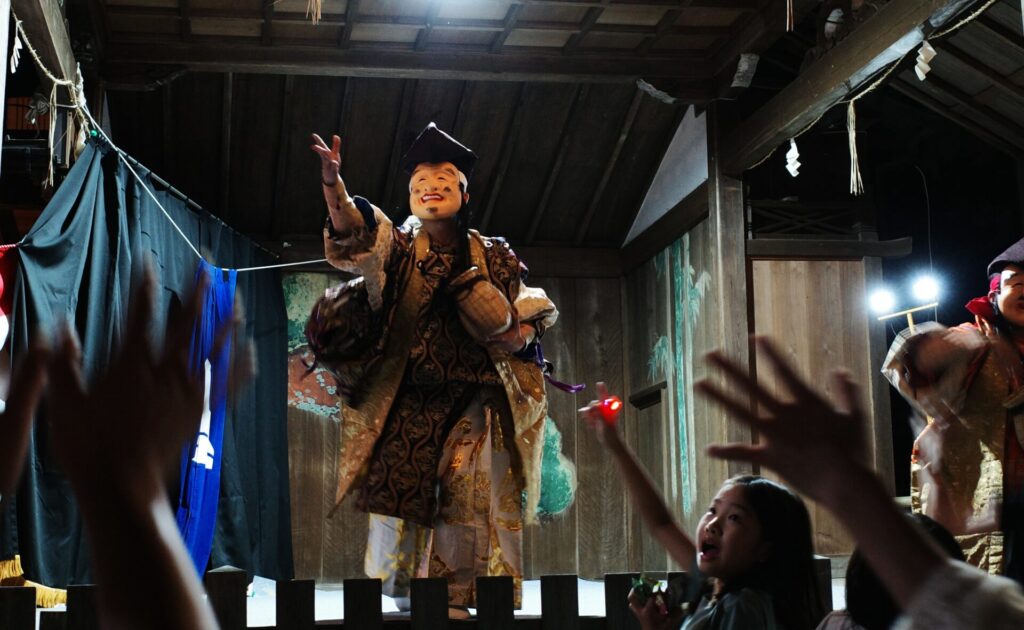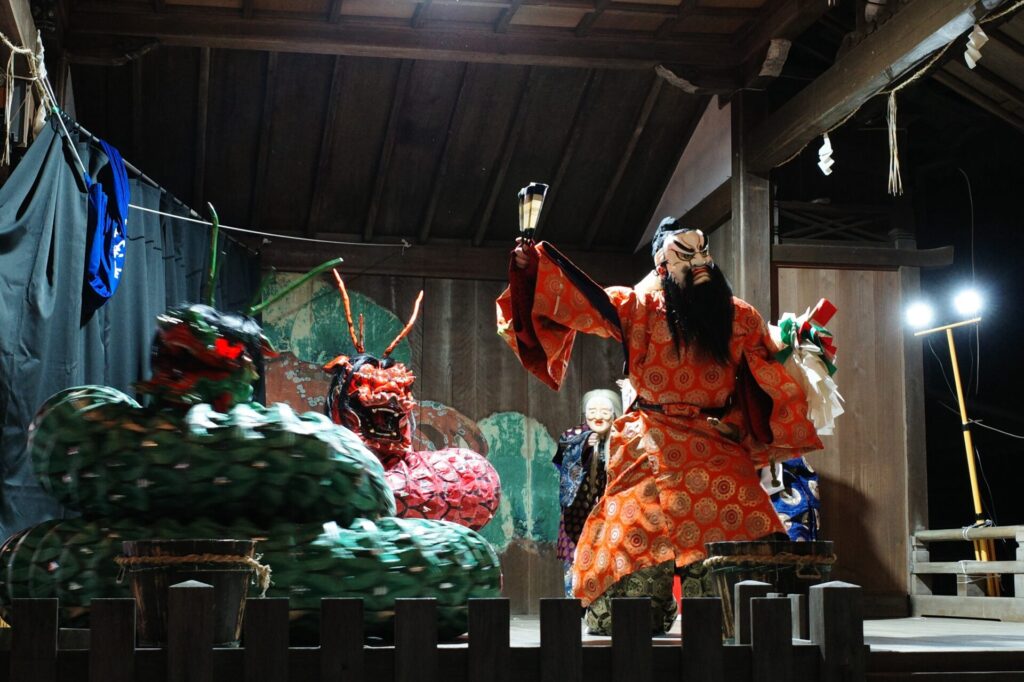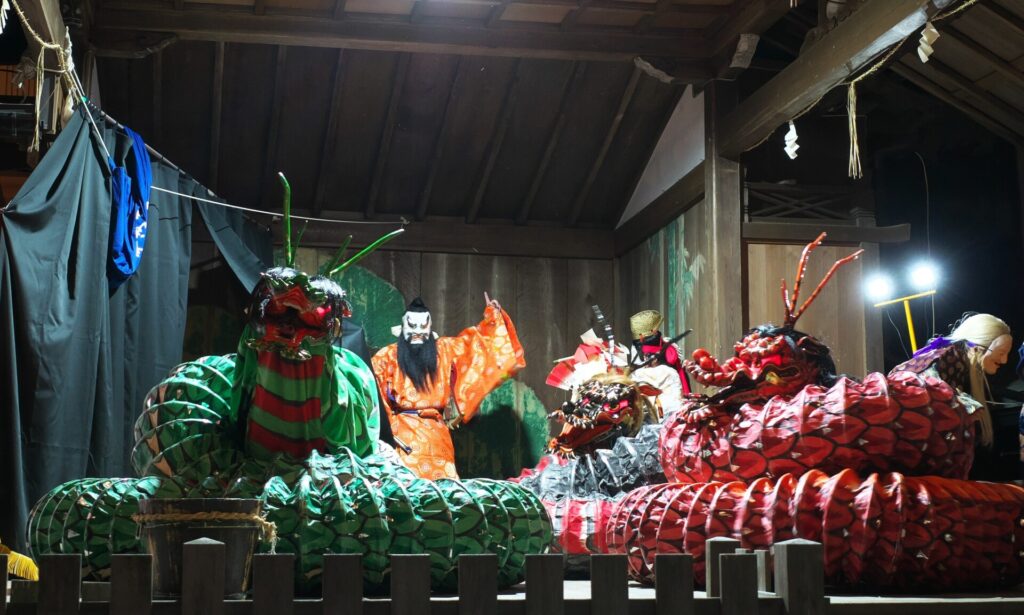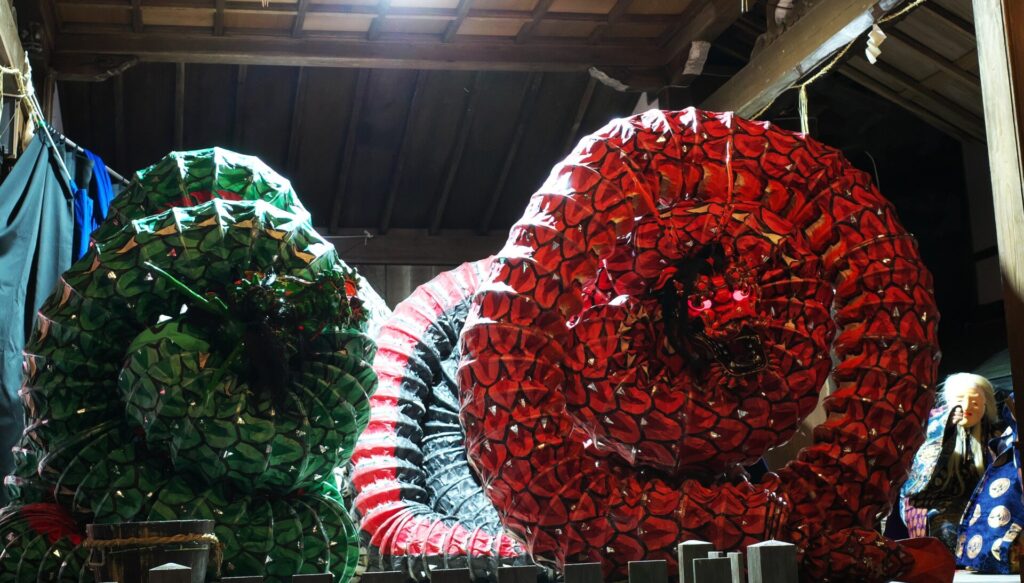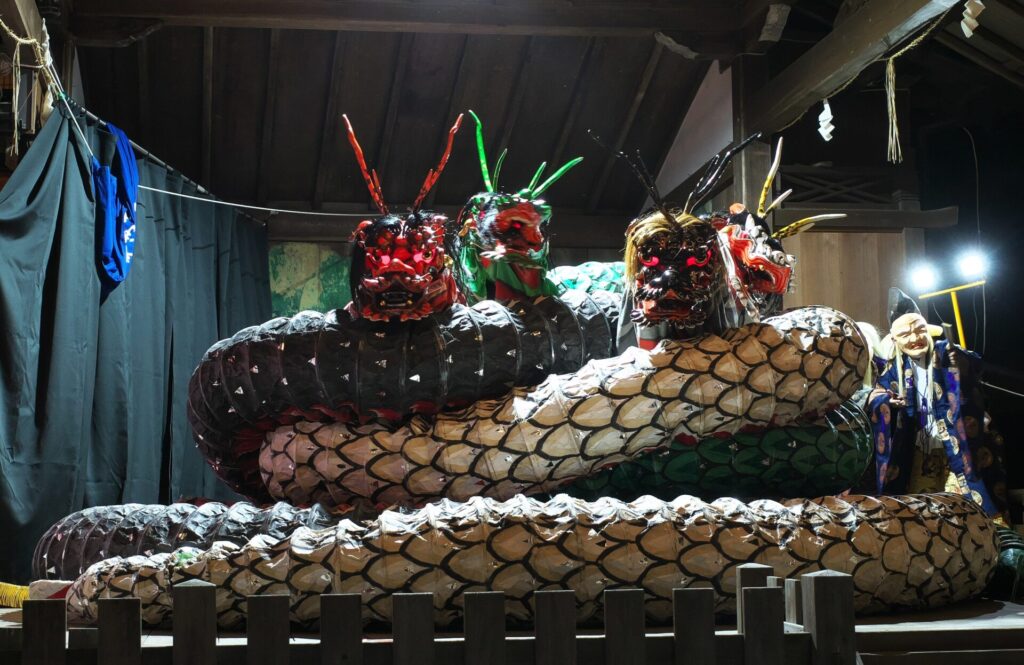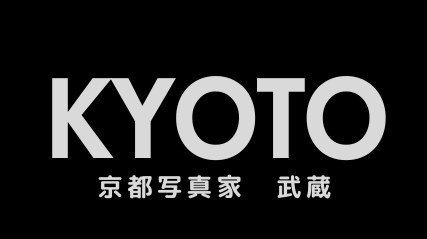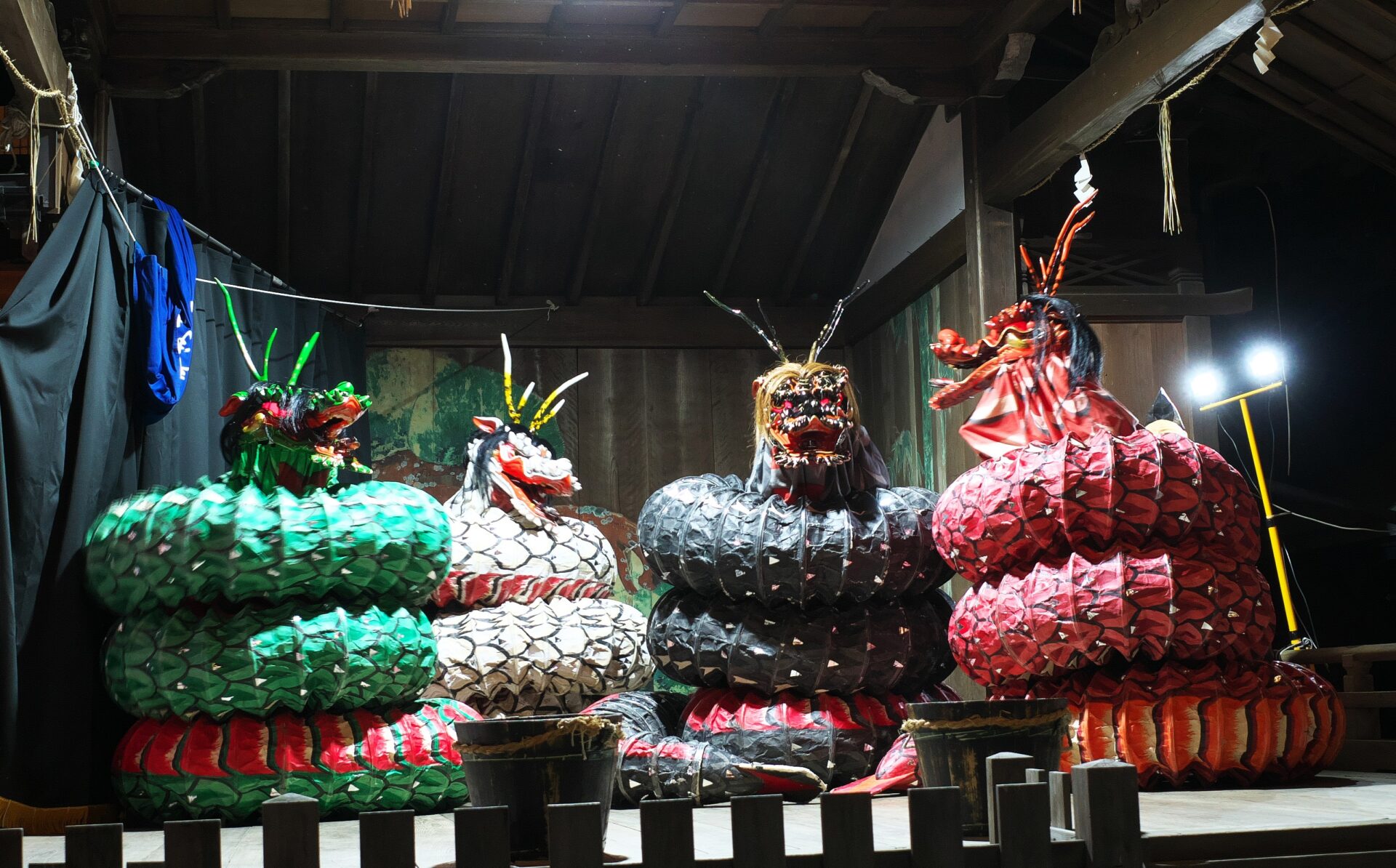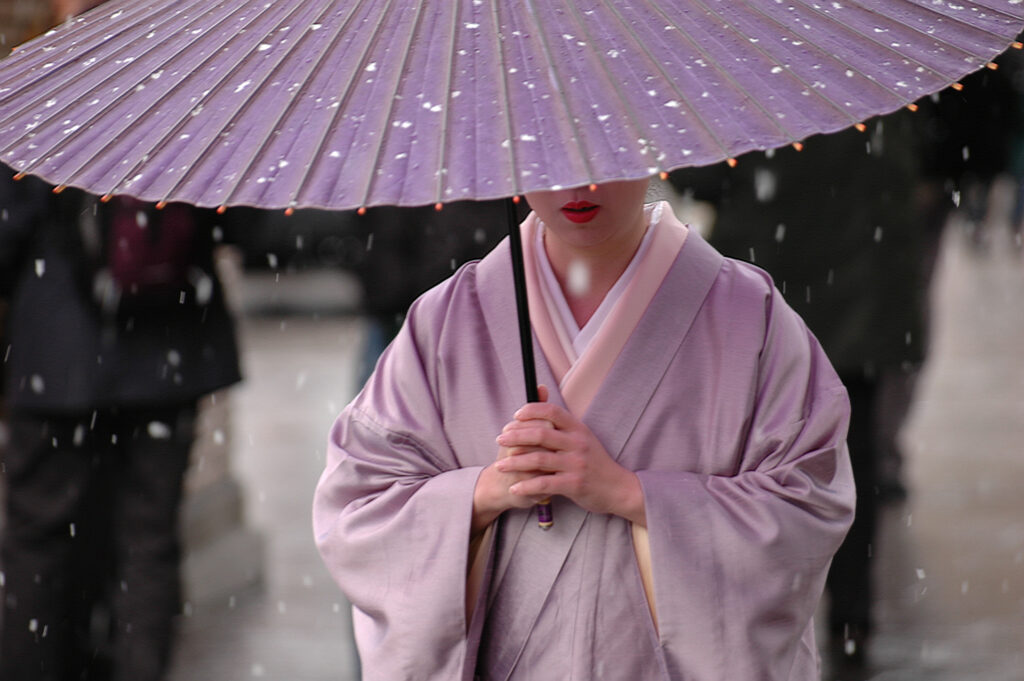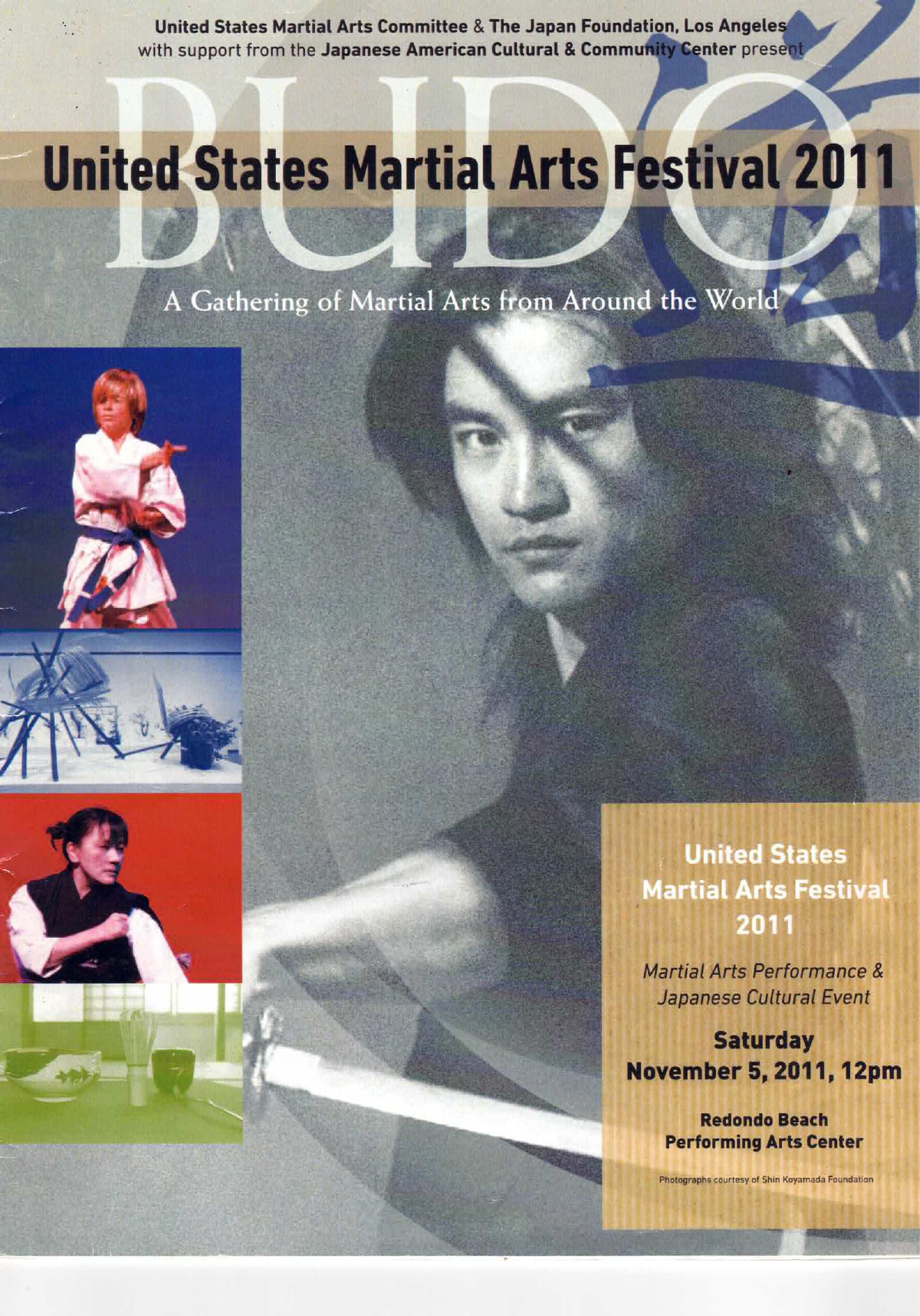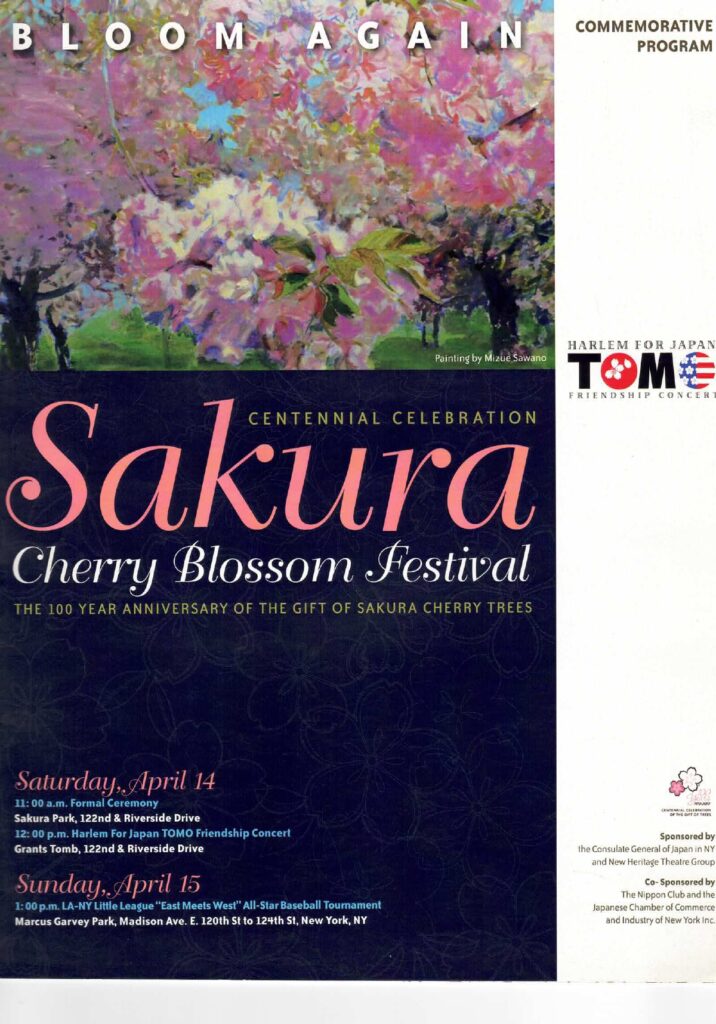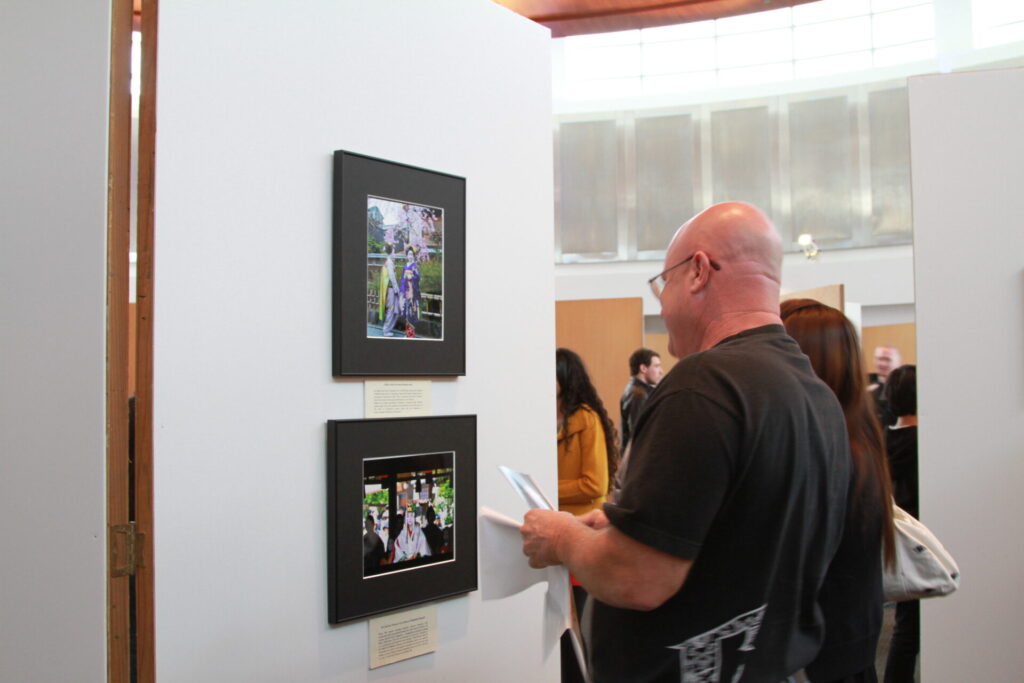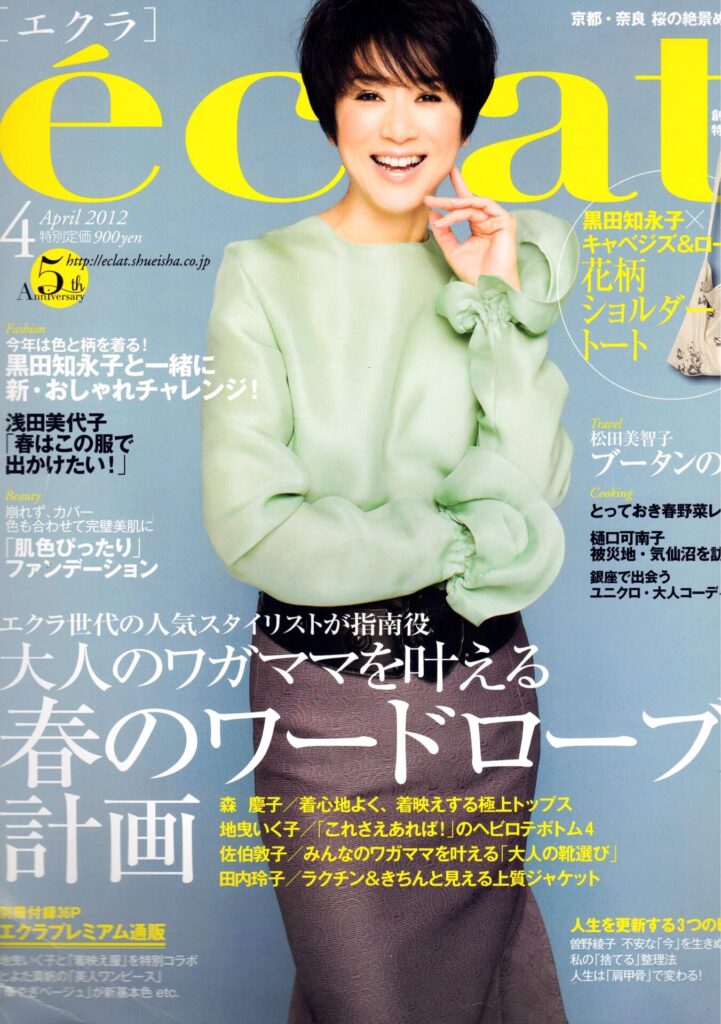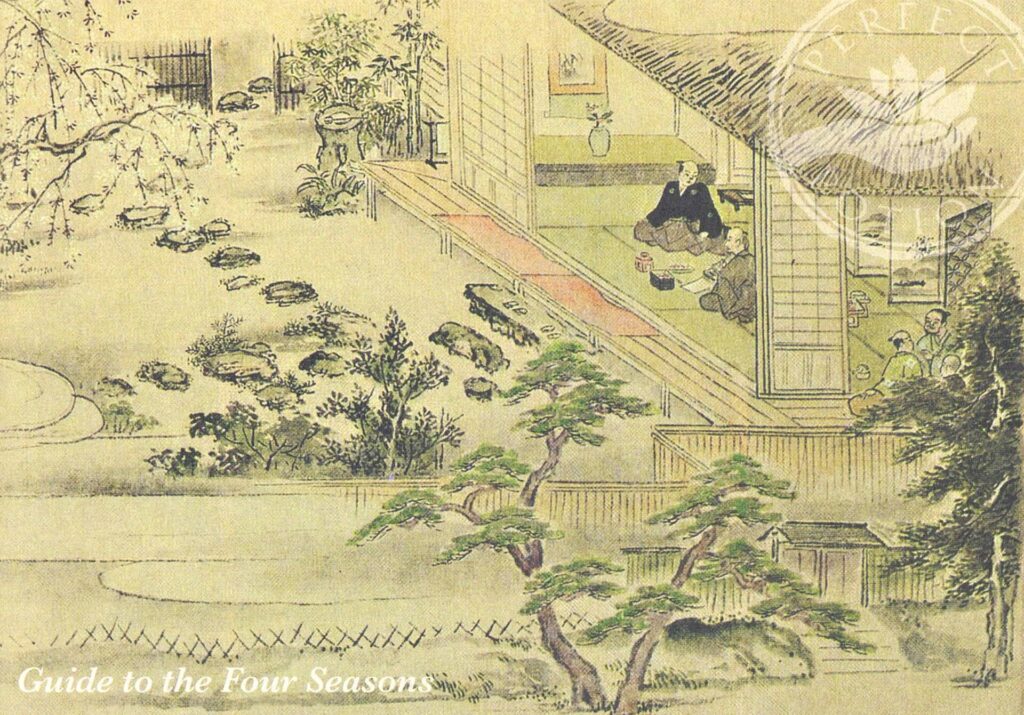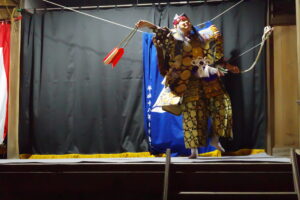Iwami Kagura is a vibrant and fast-paced form of traditional performance art, originating in the Iwami region of western Shimane Prefecture, Japan.
What is Kagura? Kagura literally means “entertaining the gods” and is a type of Shinto ritual dance and music, often performed as an offering to the deities to pray for good harvests and to ward off disasters. Its origins are often traced back to ancient Japanese mythology.
Key Features of Iwami Kagura:
- Fast-Paced and Dynamic: Unlike some other forms of traditional Japanese theater, Iwami Kagura is known for its energetic dance and a notably fast, driving musical tempo, typically using a lively eight-beat rhythm.
- Stories from Mythology: The performances are primarily based on simple-to-follow stories from Japanese mythology (like the ancient texts Kojiki and Nihon Shoki), often involving dramatic battles between gods and demons.
- Spectacular Costumes and Masks: Dancers wear incredibly gorgeous, hand-sewn costumes adorned with gold and silver thread, along with expressive masks made from light yet durable washi (Japanese paper).
- The Orochi Performance: The most famous and spectacular piece is often the “Orochi,” which tells the myth of the god Susanoo-no-Mikoto slaying the eight-headed serpent, Yamata-no-Orochi, featuring gigantic serpent props.
- Evolving Tradition: While deeply rooted in tradition, Iwami Kagura has modern elements and can incorporate special effects like smoke and even fireworks to enhance the drama, making it accessible and thrilling for contemporary audiences.
- Community Based: Today, the performers are typically local residents, not professional actors, who practice in their free time, highlighting the strong community passion for this folk art.
You can often catch performances at local shrines, cultural centers, or on weekend evenings, making it a unique and unforgettable cultural experience.
